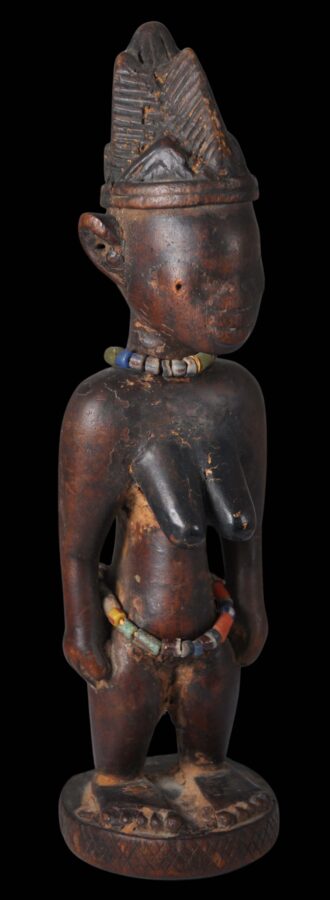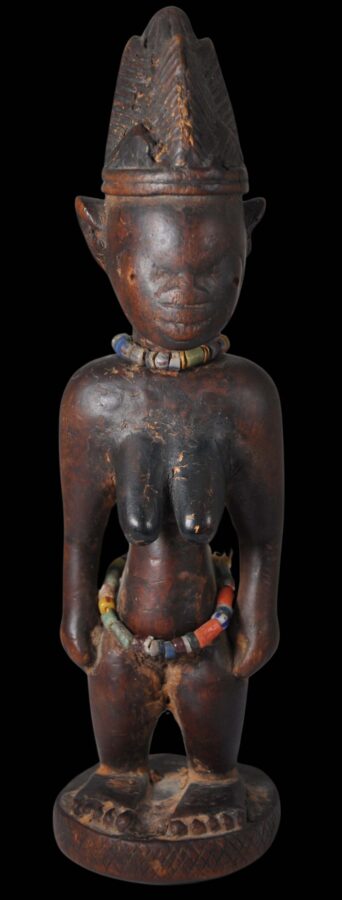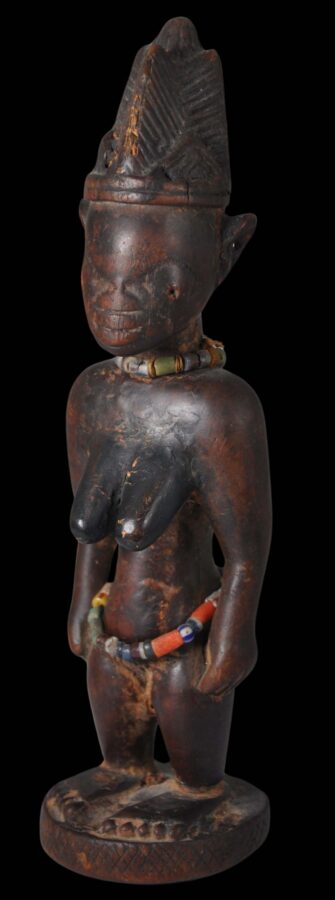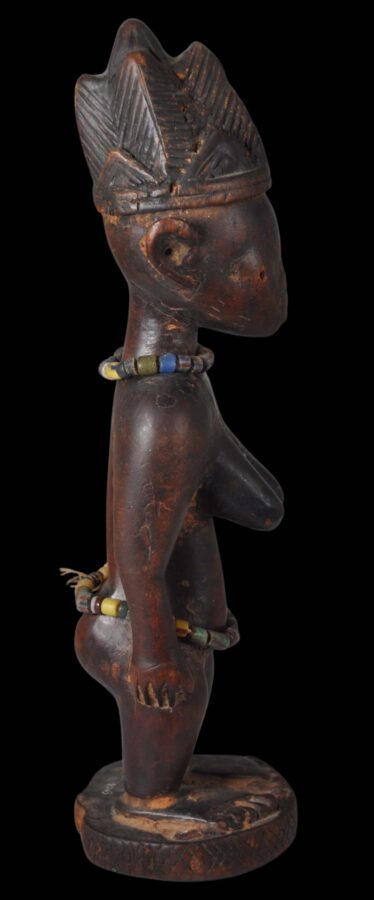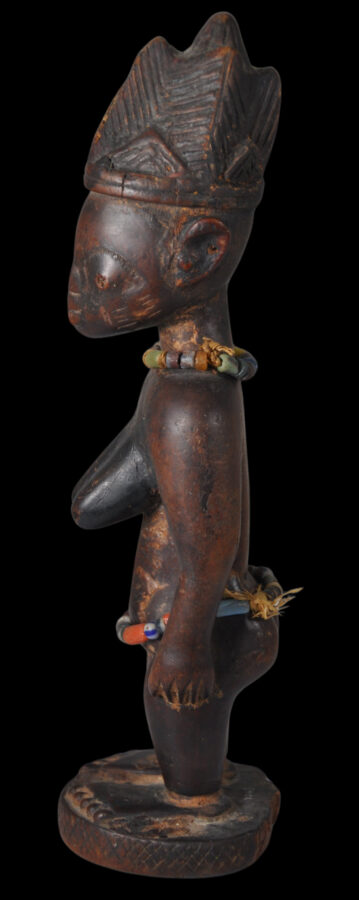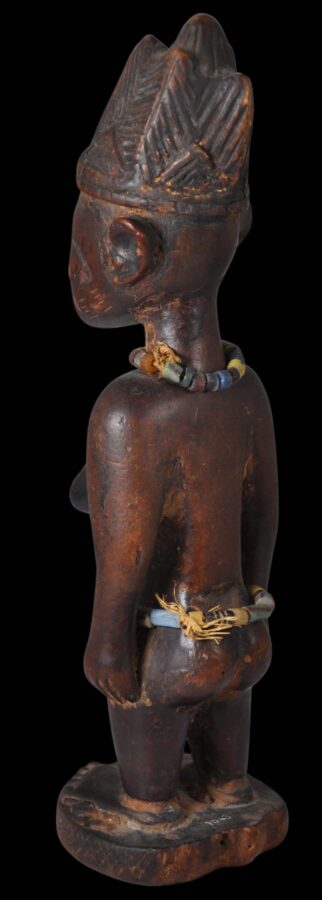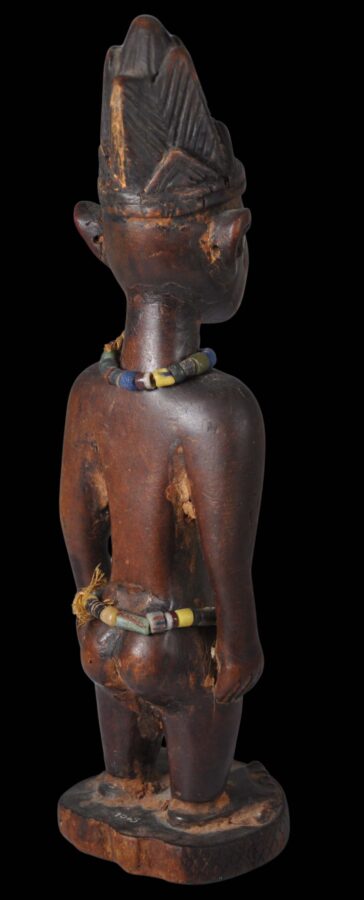Enquiry about object: 9694
Yoruba Ibeji Female Figure
Kishi, Oyo Yoruba People, Nigeria early 20th century
height: 24.5cm, weight: 208g
Provenance
private collection, London, UK; acquired previously in the Netherlands.
This female Ere Ibeji figure has a superb patina from age and ritual use. (Ere Ibeji is a combination of Yoruba words: ere ‘sacred image’, ibi ‘born’ and eji ‘two’.) The figure stands with hands on hips, has prominent breasts, elongated arms and wide, flat wide feet. The face is worn from ritual caressing , but wide-open, bulging elliptical eyes are evident along with thick lips. The irises are hollow and the prominent ears are pierced.
Two sets of scarifications are on each cheek.
The multi-point coiffure rises vertically from the top of the head. This high towering crown-like coiffure is found on many female twin figures from the north-western Oyo district. This coiffure is usually reserved for queens. However, all coiffures are typically shared between male and female figures in Yoruba’s carvings.
The figure has been further decorated with strands of glass trade beads – one around the neck and one around the waist.
Ere Ibeji figures represent a dead infant twin. However, like all such ibeji figures, this example is carved with mature or adult features, such as fully developed breasts. The arms are elongated but the legs are short. Such a contrast in the limbs’ proportions is typical of Yoruba carving.
Yoruba people have the highest dizygotic (non-identical) twinning rate in the world. The births of twins amongst Yoruba women are four times more likely than anywhere else in the world. Unfortunately, the mortality rate of the twins also is very high. Ere Ibeji figures were carved as spiritual representations of the twins who died. These figures were commissioned from village carvers, who were also often highly trained priests (Babalawo). They images were carved as adults, rather than as the deceased infants. It is common in African sculpture that child features in carving are more mature, including elaborate coiffures, scarifications on the face, fully developed breasts (on female figures), pubic hair and prominent genitalia. They were usually placed on a shrine dedicated to Elegba (a divine messenger deity) in the living area of the house and fed, bathed and dressed regularly. These figures were particularly special to the mother, who kept them close to her and caressed the figures in a loving manner, hence the wear that genuinely old examples exhibit.
The figure here stands unaided and without rocking. There is some old termite damage to the reverse of the platform on which the ere ibeji stands.
References
Bacquart, J. B., The Tribal Arts of Africa, Thames & Hudson, 1998.
Fagg, W. and J. Pemberton, J., Yoruba: Sculpture of West Africa, Collins, 1982.
Polo, F., Encyclopedia of the Ibeji, Ibeji Art, 2008.
Rowland, A., H.J. Drewal, and J. Pemberton, Yoruba: Art and Aesthetics, Museum Rietberg, Zurich, 1991.


